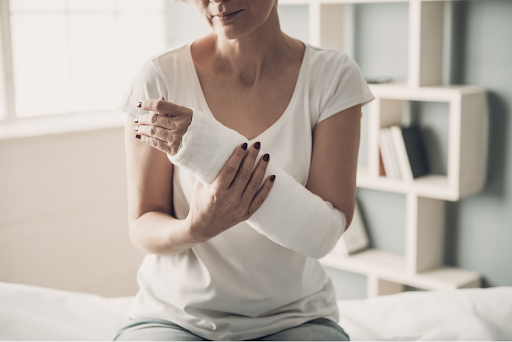Having strong bones is important to maintaining your quality of life and overall health. However, there are situations where the strength of bone tissue may deteriorate. Osteoporosis is defined as decreased bone density and increased enlargement of bone spaces, leading to an increased risk of breaking a bone.
It is particularly important to screen post-menopausal women to look for osteoporosis (or the less severe version, called “osteopenia”) using a DEXA scan (also known as a bone density scan) because there are no symptoms of this disease until someone breaks a bone. Often, osteoporosis is not detected until an individual has a fracture. There are many effective treatments that can reduce the risk of breaking a bone and ARBDA rheumatology physicians are specifically trained on the best ways to treat this disease. When treated correctly, we can significantly reduce the chance of future fractures.
When left untreated (or under-treated), the probability of osteoporosis-related fractures increases dramatically. Around two million fractures occur annually and have contributed to lowered quality of life, ongoing disabilities, and fatalities for countless people. To learn more about why those with osteoporosis are at risk of bone fractures, here is an overview of the condition, who is most likely to develop it, and where damages may occur in the body.
What Is Osteoporosis?
Bones, much like the other organs, are cells that grow and change over time. During the bone remodeling process, old bone cells are broken down while new ones are produced. The purpose of this function is to ensure that the skeleton remains in good condition. However, sometimes the loss of bone cells outpaces the creation of new ones, leading to reduced bone density and making the bones prone to fractures.
Who Is Susceptible to Osteoporosis-Related Fractures?
Those who develop osteoporosis are much more likely to experience fractures due to decreased bone density. But who is at greater risk? While there are many causes that can lead to osteoporosis, certain factors can make the strength of bones even weaker. Listed below are some of the potential traits, characteristics, and lifestyle choices that can influence and worsen osteoporosis:
- Osteoporosis develops more commonly with increased age.
- Dietary factors, such as lack of calcium and vitamin D, can further weaken bone growth.
- The existence of certain medical problems, such as thyroid, parathyroid or kidney disease, may also create greater risk.
- Genetics and a family history of osteoporosis can also be strong indicators it may develop in an individual.
- Exercise promotes healthy bone growth, so people who are not physically active may have weaker bones as a result.
- Smoking tobacco and drinking too much alcohol also increase the risk.
The Most Common Kinds of Osteoporosis-Related Fractures
Given how brittle bones become due to osteoporosis, fractures can occur much more easily than in bodies with healthy skeletal systems.
While osteoporosis weakens all bones in the body, the wrist, hip, and the spine are the most at risk of fractures. These specific locations have high amounts of trabecular bones, which are interconnected plates that become significantly weakened by osteoporosis. This is significant because many studies have found that osteoporotic hip fractures are known for having a high mortality rate. Additionally, vertebral fractures of the spine are twice as common, can be incredibly painful and can result in spine compression. Should the vertebral discs in the spine collapse, the torso, and abdomen can compress and decrease an individual’s height. Therefore, hunched backs are one of the common signs of osteoporosis.
Seek Osteoporosis Treatment Early
Osteoporosis-related fractures can take longer to heal due to the inhibited bone growth, and in addition to physical pain and limitations caused by fractures, those who develop fractures can suffer psychologically as well. As a result, it is in your best interest to seek out a professional diagnosis quickly to prevent any dangerous fractures from occurring. At ARBDA, our team of specialists is prepared to help you with any bone-related diseases at our infusion centers in NJ. Call our osteoporosis and arthritis treatment center today for further information.
________________________________________________________________________________________________________________
2. https://www.bone-joint.com/what-happens-if-osteoporosis-is-left-untreated/
3. https://www.ajmc.com/view/a357_11ma7__dempster_s164to169
4. https://www.ajmc.com/view/a357_11ma7__dempster_s164to169
5. https://www.ajmc.com/view/a357_11ma7__dempster_s164to169
6. https://www.mayoclinic.org/diseases-conditions/osteoporosis/symptoms-causes/syc-20351968
7. https://www.healthline.com/health/managing-osteoporosis/how-likely-is-it-that-i-will-break-a-bone-if-i-have-osteoporosis
8. https://www.ajmc.com/view/a357_11ma7__dempster_s164to169
9. https://academic.oup.com/jcem/article/99/1/97/2836197
10. https://www.healthline.com/health/managing-osteoporosis/how-likely-is-it-that-i-will-break-a-bone-if-i-have-osteoporosis

